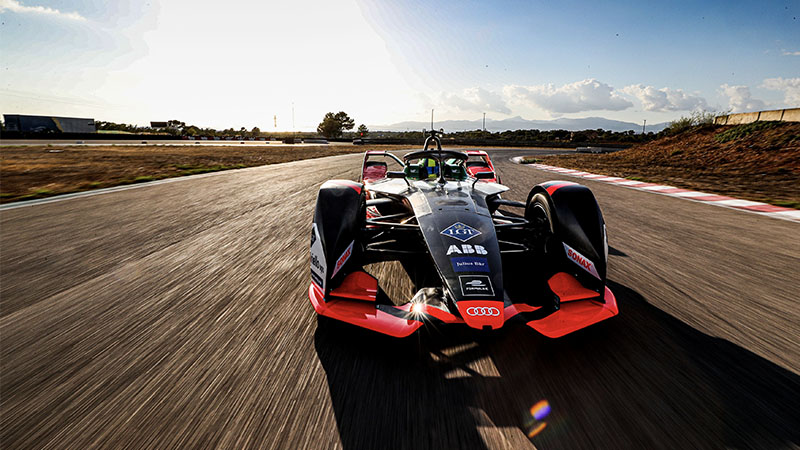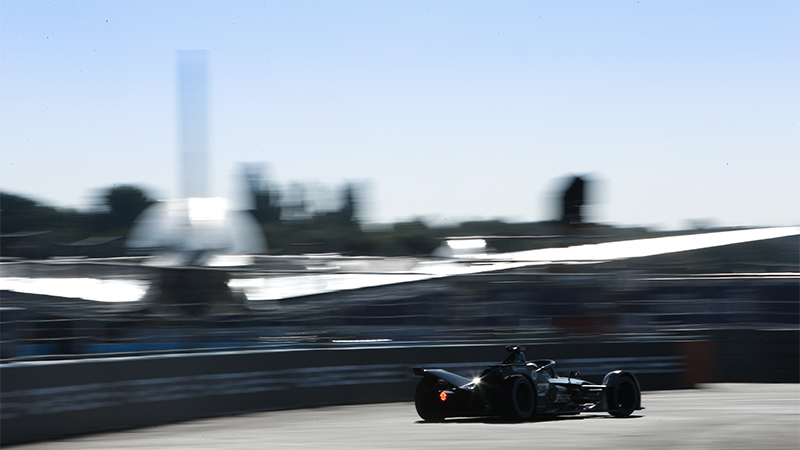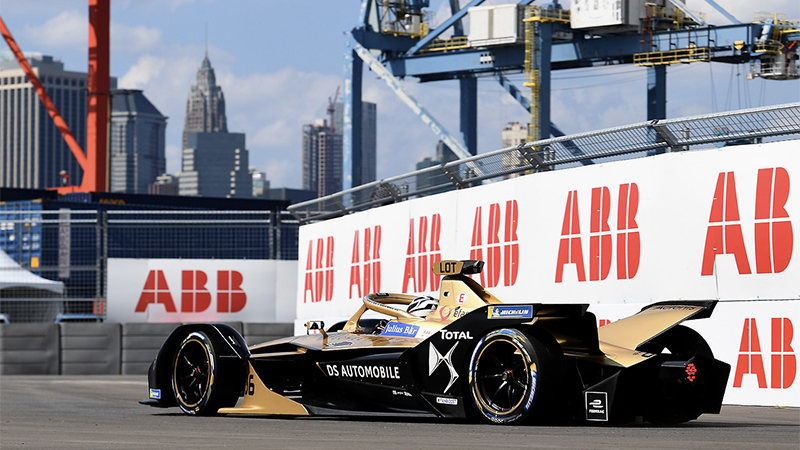Lewis Hamilton and John Force are each at the pinnacle of their respective motorsports. While Hamilton's 1.6L V6 is a little different from Force's 8.2L V8, the engines both burn fossil fuels to make power. Now, there's an upstart in the racing world looking to change that. The Batmobile-looking Formula E racecars blast to 60 in 2.8 seconds, reaching a top speed over 170 MPH, all powered by electricity. From battery tech, sustainability, and new ways for fans to interact, here's a look at one possible future of racing.
Formula E overview
While the “1" in Formula 1 stands for the premier open-wheel racing league, the “E" in Formula E less creatively means electricity. Like your neighbor's Nissan Leaf, Formula E racecars are electric vehicles that use electricity stored in a battery to drive electric motors.
Starting with the 2014-15 season (Formula E seasons run approximately the same time as US school years), 24 drivers in teams of two per car attempted to change viewers' minds on electric cars.
Most Formula E races take place on street circuits made up of downtown roads. This offers a varied course with lots of curves, and keeps costs down for the host city, but means you won't find Talladega speeds, as streets weren't designed for that. Since Formula E is open-wheel racing, NASCAR's “rubbin' is racing" method is out, as contact between cars usually severely damages both vehicles.
Like other series, there's the usual shakedown runs and practice before race day, but much like Formula 1, Formula E races begin from a standing start. It's also not a set amount of miles here, like in the Indy 500. Rather than distance, Formula E races run for 45 minutes, and then once the leader passes the finish line that's the final lap.
Another distinct feature should appeal to anyone who's ever played Mario Kart. By driving through “activation zones" outside the usual driving line (for example, the far outside line of a corner) the driver goes slower, but gains Attack Mode. This temporary boost delivers an extra 35 kW (about 47 hp). So is it worth the risk to take the slow way through the corner for temporary power? That'll depend on the driver and the course, adding an element of unpredictability to the mix.
Here's another feature you won't see in Formula 1. FanBoost is the popularity contest that pays. Visit the Formula E website, use their app, or tweet them to vote for your favorite driver. The top five drivers with the most votes receive an extra five seconds of power for a critical pass. Street circuits are tight, with limited passing opportunities, so FanBoost can make a difference at the right point.
The 2019-20 season saw Mercedes and Porsche join Formula E. The current field also includes Audi, BMW, Jaguar, Nissan, and the lesser-known (to North Americans) French Citroen, Chinese Nio, and Indian Mahindra manufacturers. With Formula E gaining popularity every year, you have to wonder how long until Ford jumps in.
Electric Racecars
Formula E cars look appropriately high tech, with the carbon fiber/Kevlar bodywork looking like an F1 car designed by Nissan Deltawing engineers with help from Bruce Wayne.
Spark Racing Technologies and Dallara build the carbon fiber and aluminum chassis. Underneath the bodywork and behind the driver sits the electric motors that spin to a Formula 1-inspired redline, at 18,000 RPM. Unlike F1, Formula E racers max out at 250 kW, approximately 335 horsepower. That's stock Toyota Supra power, but plenty in a car with a race-weight right of 1,800 lbs, or about half of a Dodge Challenger.
The electric motors have a cooling system complete with radiator, as shedding excess heat is important to keep the motor from losing power or shutting down entirely. Up close, the cars' motors sound like supercharger whine mixed with a sci-fi laser weapon. From a distance like the stands, the racers are surprisingly quiet, with the motor at the same sound level as rushing wind, tire/track contact, and suspension compression noises.
Unusual for an EV, Formula E drivers get to shift their own gears with a manual transmission. Modern street-legal EVs and hybrids, from the Tesla Model 3 to the Koenigsegg Regera receive a 1-speed direct drive transmission, which makes sense for efficiency, but limits the fun. Although the race series is high-tech, there's a distinctively 1970s flavor to the 3-, 4- and 5-speed Formula E gearboxes.
The initial Gen 1 cars didn't have the battery capacity to last an entire race, requiring a battery swap halfway through the race. With Gen 2 cars of the 2018-19 season, power increased, and the extra battery capacity allowed cars to run a full race on one battery. The Gen 3 cars (projected to start in 2022) will offer 600kW regenerative braking to recharge the battery when not going full throttle. This is similar to your average street EV or hybrid, or the F1 Energy Recovery System (ERS), where any time the driver is off the throttle, generators spin, producing energy for the battery.
The Gen 3 car also features a monstrous 800 kW “flash charging," which sounds dangerous and awesome. It will allow battery recharging during pit stops, just like Formula 1 refueling. The Gen 3 car should only need 30 seconds to fully recharge, so even a five second pit stop will deliver a real range increase.
Why EV Racing?
While there's plenty of YouTube videos of Teslas dragging everything from Hellcats to Huracáns (“in Mexico", of course), there's been very little in the way of EV road course track racing. So why Formula E now? The answer is the same reason NASCAR switched from leaded fuel to unleaded with 15 percent ethanol in 2011. Part of that is for increased octane, but the corn alcohol also adds renewable fuel bragging rights and lowers the series' emissions.
With EVs slowly taking over the automotive landscape, Formula E wants to the be the series in on the trend, as well as pointing to a lower emissions future for all motorsports.
“I see Formula E as our test-bed for innovative technologies, which we can apply to daily life in order for all of us to contribute to lowering our carbon footprint and contribute to a better world in the future," says Formula E CEO Peter Voser in a press release.
This is a race series dedicated to earning fans, but also changing the world. Charge these racers on renewable energy, and you can have all the speed you want while reducing racing's impact on the environment. If EV racecars can succeed, it paves the way for better EVs on the streets, especially the fun ones enthusiasts want.
And that's what Formula E is really about: the trickle-down of race technology for your street car. Everything from superchargers to fuel injection and disc brakes were first tested in battle on the race track before making their way to production street cars. It's why Ford has a ludicrous Mach-E prototype with seven electric motors making 1,400 hp and 1,500 lb-ft.
Electric cars seem to be the future, but they can also be the future of hot-rodding, and as Formula E shows, the future of racing.
Ever caught a Formula E race, or have plans to watch one now? Let us know your thoughts on EV racing in the comments below.














